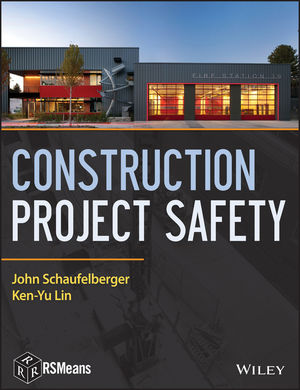A NIOSH Science Blog post
The Safety Climate Assessment Tool (S-CAT) for construction

Organizational safety climate is defined as shared perceptions among employees regarding what is rewarded, expected, valued, and reinforced in the workplace with respect to safety (Zohar, 1980). It can positively influence employee safety knowledge, motivation, attitudes, and behaviors, as well as reduce injury outcomes (e.g., Clarke, 2010, Probst et al., 2008, Probst and Estrada, 2010, Zohar, 2010). Research reported in the Journal of Safety Research shows that the Safety Climate Assessment Tool (S-CAT) is a reliable and valid tool for construction companies to self-assess their safety climate. The article, summarized below, details the creation and evaluation of the S-CAT, the first rubric-based safety climate measure designed for the construction industry.
Despite advances to improve safety and health in the construction industry, construction remains one of the most hazardous industries. In 2016, construction represented less than 7% of employment (Bureau of Labor Statistics, 2016b), yet accounted for nearly 20% of all occupational fatalities (Bureau of Labor Statistics, 2016a). Employees face daily hazards that result in an experienced injury rate that is 44% higher than the national average (Bureau of Labor and Statistics, 2016).
There has been a shift away from reliance on lagging retrospective indicators, such as recordable incidence rates, toward a focus on leading indicators whose measurement can enable companies to proactively monitor and continually improve their safety environment. One such leading indicator that has been shown to reliably and consistently predict a variety of safety-related outcomes is organizational safety climate.
CPWR- The Center for Construction Research and Training and researchers at Washington State University partnered to develop the Safety Climate Assessment Tool (S-CAT). The S-CAT is a free online tool that provides construction companies of any size the opportunity to assess their organizational and job site safety climate. Users respond to 37 separate items across 8 safety climate factors that were identified by construction industry subject matter experts participating in a Safety Climate/Culture workshop sponsored by CPWR and NIOSH.
Safety Climate Factors:
- Demonstrating management commitment
- Aligning and integrating safety as a value
- Ensuring accountability at all levels
- Improving site safety leadership
- Empowering and involving workers
- Improving communication
- Training at all levels
- Encouraging owner/client involvement
To evaluate whether the 8 factors could reliably measure safety climate using the S-CAT, the researchers conducted factor analysis using data from close to 900 respondents. The results supported the hypothesized eight factor structure. To assess whether it was a valid measure that could help explain safety outcomes, researchers correlated company S-CAT scores with their recordable incident rates and found that the higher the S-CAT scores, the lower the recordable incident rate.
After completing the S-CAT, companies receive a tailored report providing detailed feedback on how their company’s level of safety climate maturity compares to that of other companies that have completed the S-CAT. Companies can then use CPWR’s safety climate workbook to find safety management intervention ideas to strengthen low-scoring indicators and retake the S-CAT at a later date to evaluate the effectiveness of implementing them.
If you have used the S-CAT, please click here to visit the post on the post on the NIOSH website and let NIOSH know your impressions in the comment section below the post.
This work was supported in part by a contract awarded from CPWR – The Center for Construction Research and Training to Tahira M. Probst at Washington State University. CPWR is the NIOSH-funded National Construction Center and is supported through a Cooperative Agreement.
This blog is part of a series highlighting extramural research funded by NIOSH through the Office of Extramural Programs.
References
Bureau of Labor and Statistics, 2016 Bureau of Labor and Statistics Industry Injury and Illness Data – Table 1 – Incidence Rates – Detailed Industry Level – 2016 Retrieved from https://www.bls.gov/iif/oshsum.htm#16Summary_News_Release (2016)
Bureau of Labor Statistics, 2016a Bureau of Labor Statistics Census of Fatal Occupational Injuries Retrieved from https://www.bls.gov/iif/ (2016)
Bureau of Labor Statistics, 2016b Bureau of Labor Statistics Current Population Survey, Labor Force Statistics, Table 18b, Employed Persons by Detailed Industry and Age Retrieved from https://www.bls.gov/cps/ (2016)
Clarke, 2010 S. ClarkeAn integrative model of safety climate: Linking psychological climate and work attitudes to individual safety outcomes using meta-analysis Journal of Occupational and Organizational Psychology, 83 (3) (2010), pp. 553-578
Probst et al., 2008 T.M. Probst, T.L. Brubaker, A. Barsotti Organizational under-reporting of injury rates: An examination of the moderating effect of organizational safety climate Journal of Applied Psychology, 93 (5) (2008), pp. 1147-1154
Probst and Estrada, 2010 T.M. Probst, A. Estrada Accident under-reporting among employees: Testing the moderating influence of psychological safety climate and supervisor enforcement of safety practices Accident Analysis and Prevention, 42 (5) (2010), pp. 1438-1444
Zohar, 1980 D. Zohar Safety climate in industrial organizations: Theoretical and applied implications Journal of Applied Psychology, 65 (1) (1980), pp. 96-102
Zohar, 2010 D. Zohar Thirty years of safety climate research: Reflections and future directions Accident Analysis & Prevention, 42 (5) (2010), pp. 1517-1522
Looking for a reprint of this article?
From high-res PDFs to custom plaques, order your copy today!








